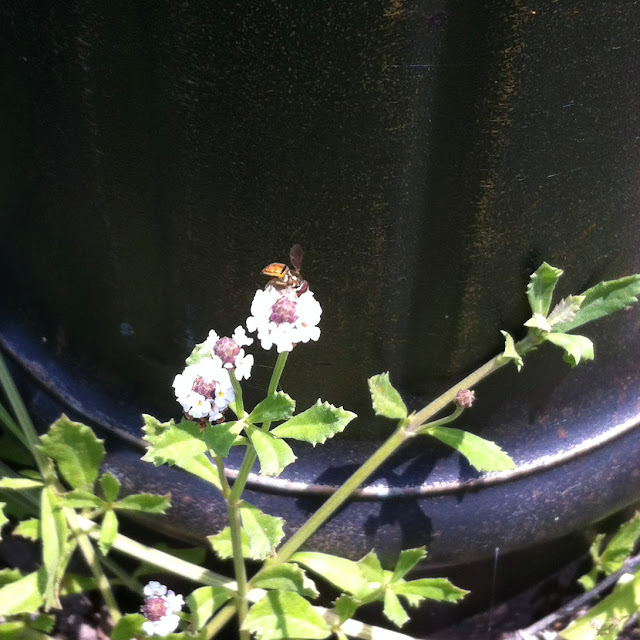We got some very nice handouts, including a couple of books.
For years, agriculture has relied on honeybees to pollinate crops. Believe it or not, they are more valuable for pollination than for the honey they produce. In fact, a huge industry has developed around renting bee hives to farmers for pollination purposes. Here's an article about how honeybees are used to pollinate the almond blossoms in California and the costs involved.
This article was written in 2012. At that time, the average cost for hive rental was $150/hive. During the workshop, we learned that since then the average cost has risen to $350/hive! Honeybee populations have declined drastically the last few years due to disease and something called "colony collapse disorder". The reasons for this decline are not well understood, but it is generally thought to be a combination of several factors. Here's a good article by the U.S. Department of Agriculture on the issue.
However, there are other types of insects that pollinate crops. In fact, honeybees were brought over from Europe by the colonists and are not even native to the United States, and we have plenty of native pollinators that can do the job as well. The workshop focused on identifying these insects and learning how to attract them.
Here is the agenda for the workshop.
During the morning session, a woman from the Xerces Society (Xerces Society) presented a slide show that was very interesting and informative.
After lunch, we had a tour of the Kerr Center gardens and observed the native plants they were using in their flower beds.
During the tour, we took pictures of insects we saw on the plants and texted them to a Kerr Center employee who put them into a slide show that we viewed after the tour. The gal from the Xerces Society helped us identify them. Here are a couple of pictures I took.
I find myself noticing more insects now. It's not unusual to find me cocking my head and peering at some winged creature on a flower.... some of them stinging insects! I'll swear there were there were 4 or 5 different kinds of wasps working over the flowers on my fennel plants this morning.






No comments:
Post a Comment